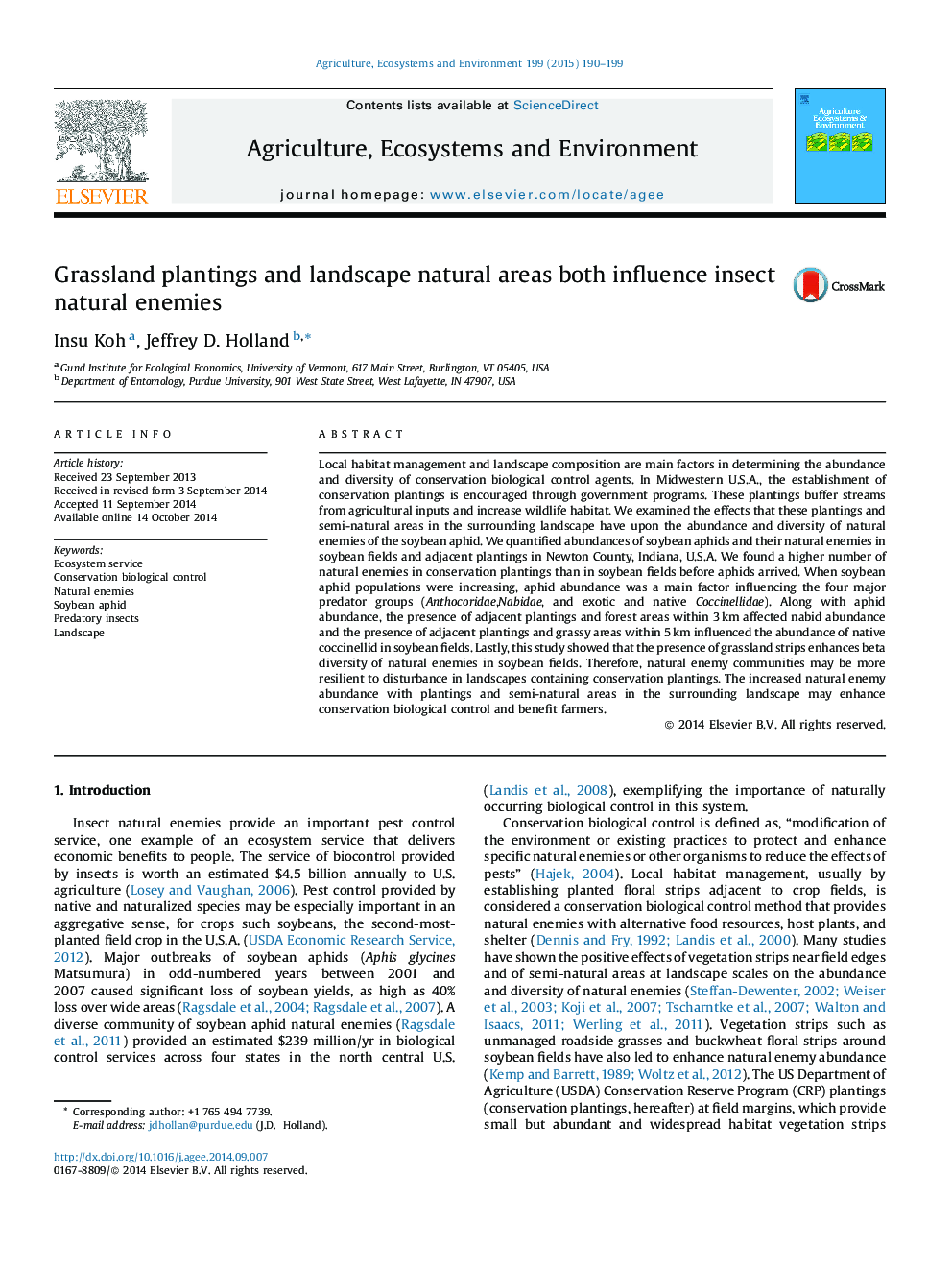| Article ID | Journal | Published Year | Pages | File Type |
|---|---|---|---|---|
| 2413857 | Agriculture, Ecosystems & Environment | 2015 | 10 Pages |
•Conservation plantings adjacent soybean fields acted as refuges for beneficial predatory insects.•Forest in the surrounding landscape increased damsel bug abundance.•Grassy areas in the landscape increased the abundance of native ladybird beetles.•Adjacent conservation plantings enhanced beta diversity of natural enemy in soybean fields.•Conservation plantings may increase conservation biological control of crop pests.
Local habitat management and landscape composition are main factors in determining the abundance and diversity of conservation biological control agents. In Midwestern U.S.A., the establishment of conservation plantings is encouraged through government programs. These plantings buffer streams from agricultural inputs and increase wildlife habitat. We examined the effects that these plantings and semi-natural areas in the surrounding landscape have upon the abundance and diversity of natural enemies of the soybean aphid. We quantified abundances of soybean aphids and their natural enemies in soybean fields and adjacent plantings in Newton County, Indiana, U.S.A. We found a higher number of natural enemies in conservation plantings than in soybean fields before aphids arrived. When soybean aphid populations were increasing, aphid abundance was a main factor influencing the four major predator groups (Anthocoridae, Nabidae, and exotic and native Coccinellidae). Along with aphid abundance, the presence of adjacent plantings and forest areas within 3 km affected nabid abundance and the presence of adjacent plantings and grassy areas within 5 km influenced the abundance of native coccinellid in soybean fields. Lastly, this study showed that the presence of grassland strips enhances beta diversity of natural enemies in soybean fields. Therefore, natural enemy communities may be more resilient to disturbance in landscapes containing conservation plantings. The increased natural enemy abundance with plantings and semi-natural areas in the surrounding landscape may enhance conservation biological control and benefit farmers.
